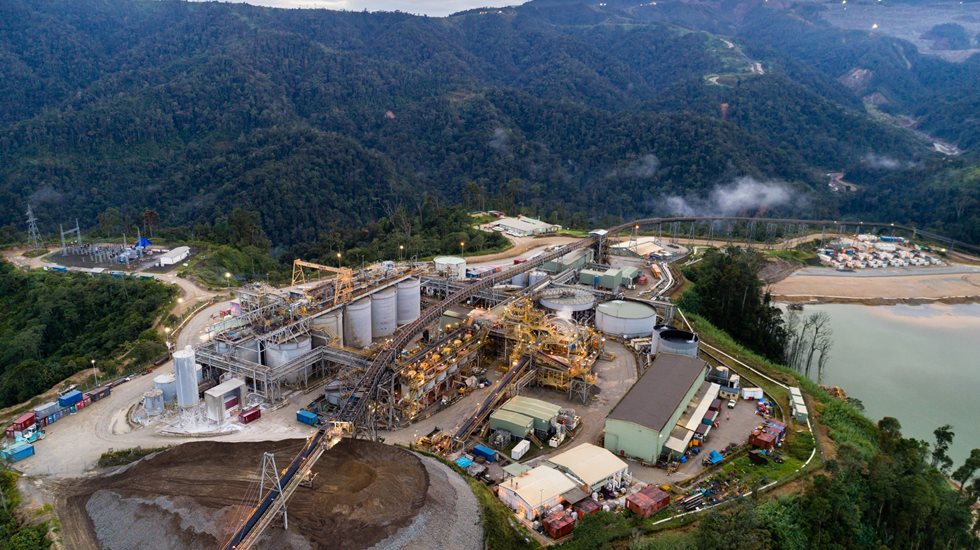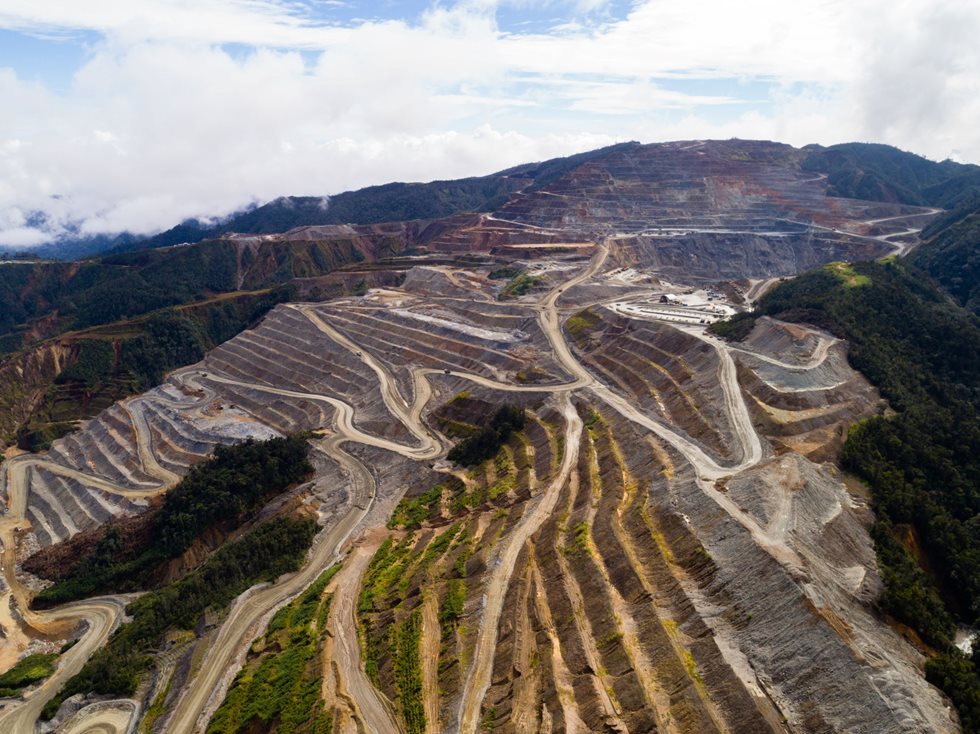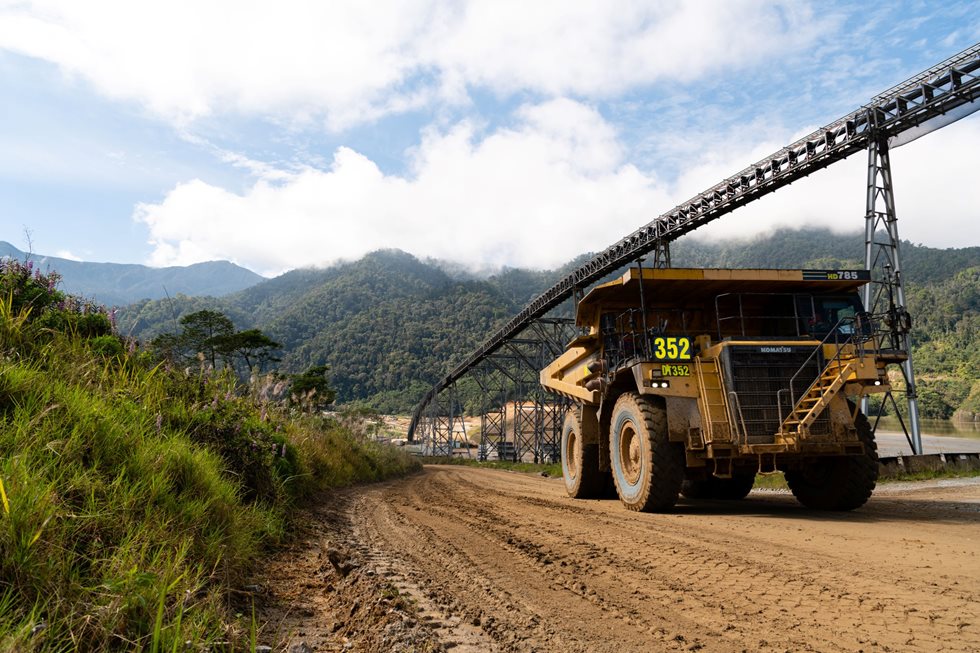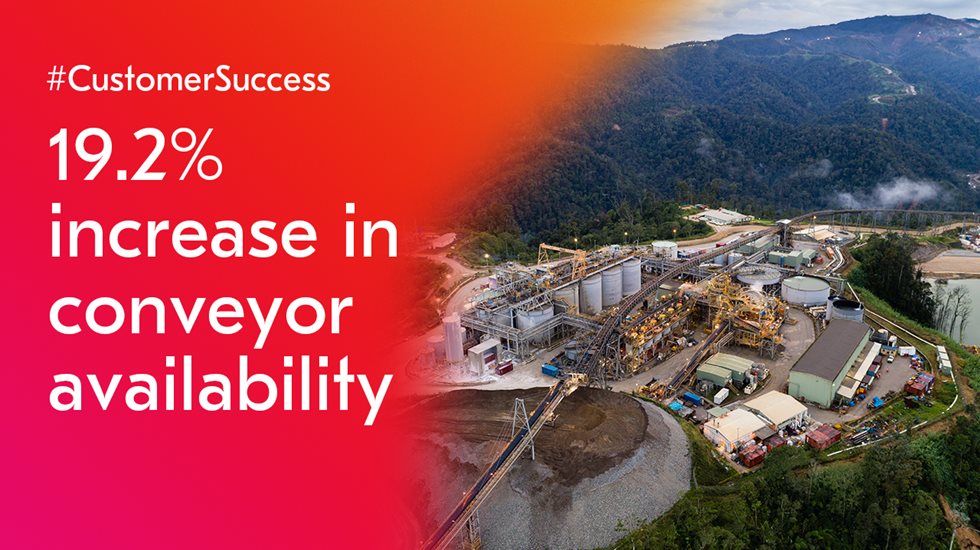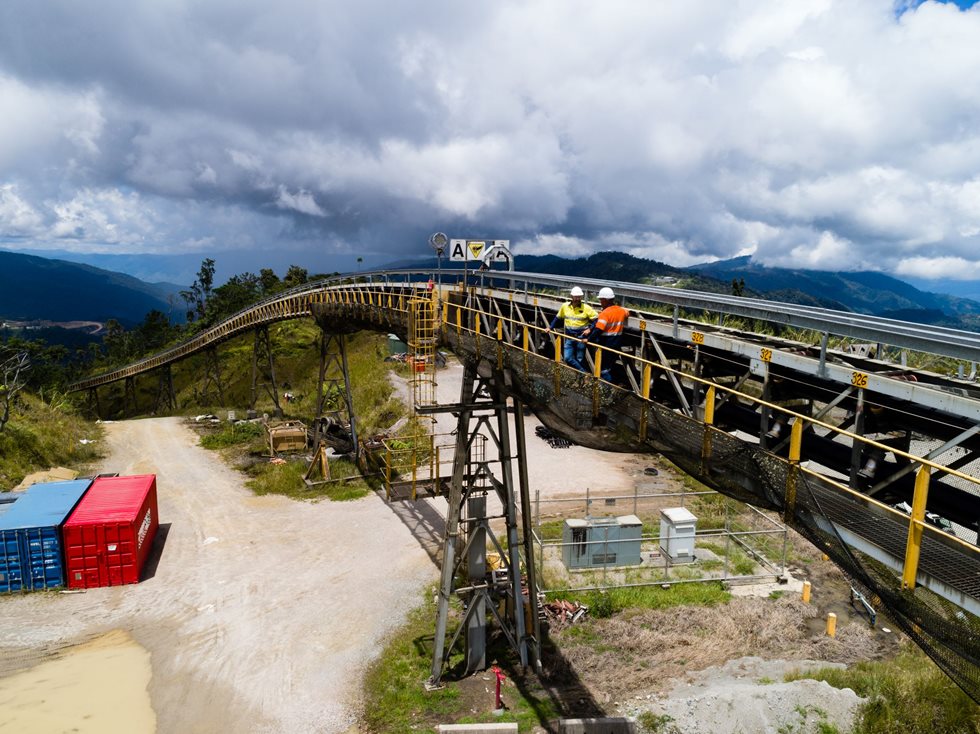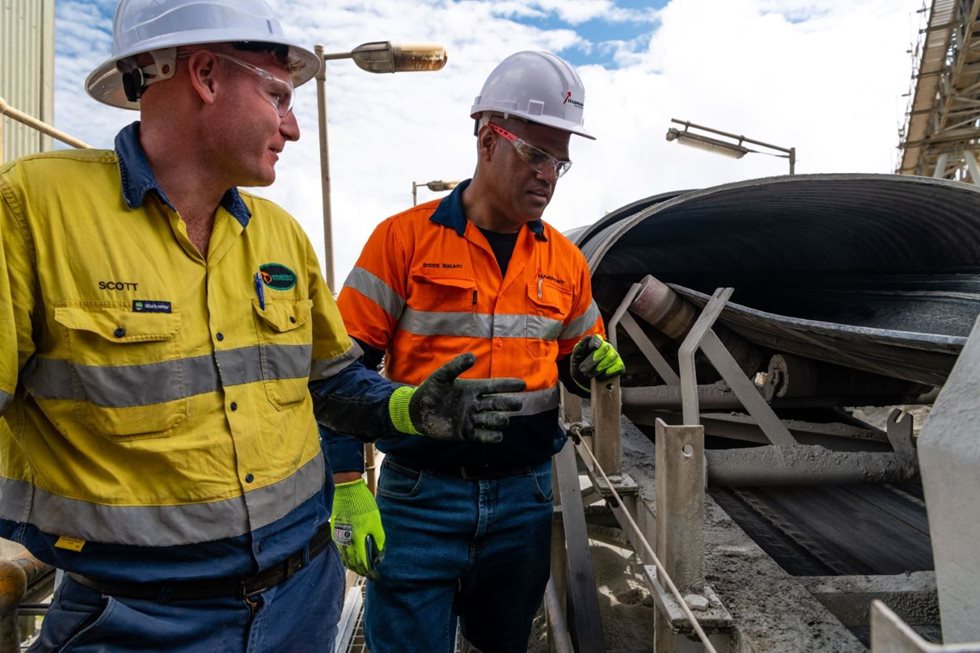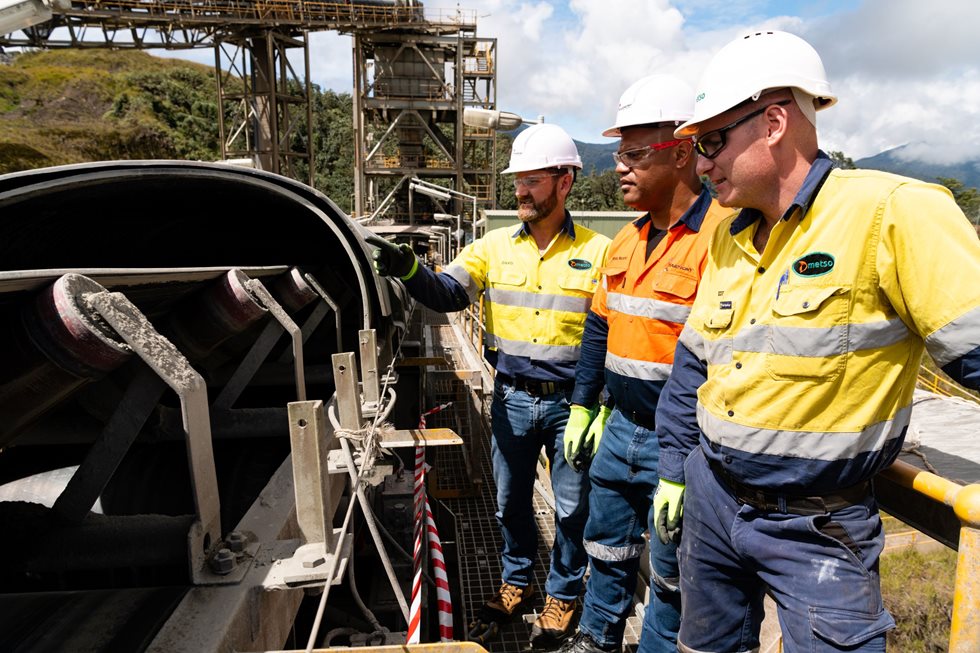The project was tackled in two parts: improving the engineering of the belt and implementing a solution for less frequent and safer belt change-outs.
Phase 1: Belt engineering
The conveyor is unusual as it utilises pipe belt technology. The belt opens to receive feed and then curls to form a pipe to convey the material before opening to discharge. The belt on Hidden Valley’s OLC was sometimes twisting preventing it from opening and closing, as well as ‘pulling out’ of its guide rollers. When this happened, it would result in prolonged downtime, causing potential production losses.
Metso engineering staff used their experience, knowledge and engineering know-how to develop a new belt that’s rigid enough to resist twisting but flexible enough to form a pipe. Metso designed the belt construction, then oversaw its manufacture and delivery to site.
“I was really impressed with the first X-ray of the belt,” said Atkinson. “it really opened my eyes to the quality of the work that was done.”
Phase 2: Turnkey solution for belt change-outs
Previously, belt change-outs were limited to sections of 800m for each 5-day (120h) shutdown. The limitations on the length of belt to be installed meant that either longer or more frequent shutdowns were required when more than 800m needed changing, increasing cost and HSE exposure, as well as reducing productivity.
“Once we had a thicker and stiffer belt, the question that we asked ourselves was – How can we change our systems so that we can replace a greater length of belt in a 5-day shutdown?” said Bierschenk.
“Because we have 10.8 km of total belt length and were only getting a 3-year lifespan, we were changing 800m sections far too often - and we can’t really afford the downtime,” he continued. “Our two conveyor belt specialists had previously worked on operations where ‘belt-flaking’ was used to change-out longer sections of belt, so I asked Metso and GHD to assist in the design of a new splicing station. With Metso’s help, we were able to develop a system that allows us to change out 3.5 km or more of belt at a time.”
Metso delivered a turnkey solution with a completely different philosophy to belt changeouts. The project started with the development of a change-out methodology and engineering assessment. This was followed by belt change-out equipment design and engineering certification, then manufacture and transport to site. Metso conducted on-site installation and commissioning providing service technicians as required.
Staff benefits from outside engagement
Harmony Gold has a strong policy of local workforce inclusion. Around 96% of Hidden Valley’s more than 1200 staff come from local communities – so training and development is a major focus of the operation.
“Many of the locals have never worked in a mine before, so our training teams help them to reach a capable level,” said Atkinson. “It’s all about supporting sustainability in the local community.”
Mechanical foreman and conveyor maintenance specialist - Robin Mali, described the Metso engagement as an opportunity to learn and improve skills.
“Getting experienced staff from Metso to come here was also beneficial in relation to how much we could learn from them about the conveyor and how to maintain it,” he said.
